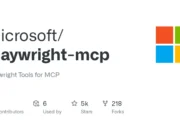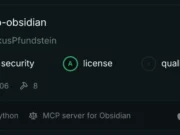DCOMUploadExec is a proof-of-concept (PoC) tool designed to exploit the Distributed Component Object Model (DCOM) for lateral movement within a network.
By leveraging the IMsiServer interface, this tool demonstrates how attackers can abuse Windows Installer’s COM functionality to execute payloads on remote systems. Below is an overview of its functionality, usage, and limitations.
Overview Of DCOMUploadExec
DCOMUploadExec consists of two key components:
- DCOMUploadExec (C++ Project): This hosts the main attack code responsible for uploading and executing payloads on remote systems.
- AssemblyPayload (.NET DLL): A default payload that pops up a MessageBox when executed. It serves as a template for custom payloads.
This tool bypasses traditional methods like PsExec by exploiting the IMsiServer interface in msiexec.exe, enabling attackers to upload and execute DLLs remotely.
Features And Basic Usage
Core Functionality
- Uploads a strong-named .NET DLL payload to the target machine.
- Loads the DLL into a remote
msiexec.exeprocess. - Executes an export function (
InitializeEmbeddedUI) from the DLL. - Receives execution results from the target system.
- Compile the Solution: Build both projects (
DCOMUploadExecandAssemblyPayload). - Run the Tool:
- For domain-based attacks:
DCOMUploadExec.exe [domain]$$user]:[password]@[address] - For local testing (requires admin privileges):
DCOMUploadExec.exe LOCALHOST
Payload Configuration
To customize the payload:
- Create a strong-named .NET assembly with an exported function named
InitializeEmbeddedUI. - Update
PayloadConfig.hwith details of your custom payload:
PAYLOAD_ASSEMBLY_PATH: Path to your DLL.ASSEMBLY_NAME: Name of your assembly.ASSEMBLY_BITNESS: Specify “64” (x64) or “32” (x86).ASSEMBLY_VERSION: Version obtained via tools likesigcheck.exe.ASSEMBLY_PUBLIC_KEY: Public key generated usingsn.exe.
Recompile DCOMUploadExec to use this custom payload.
- Both attacker and victim machines must be in the same domain or forest.
- The DCOM Hardening patch must be consistent on both systems (either applied or absent).
- The payload must be a strong-named .NET assembly and architecture-specific (x86 or x64).
DCOMUploadExec highlights how attackers can exploit lesser-known COM interfaces like IMsiServer for lateral movement.
While it serves as a PoC, it underscores the importance of securing DCOM configurations, applying patches, and monitoring suspicious activity in enterprise environments.












%20Works.png)

.webp)
.webp)

